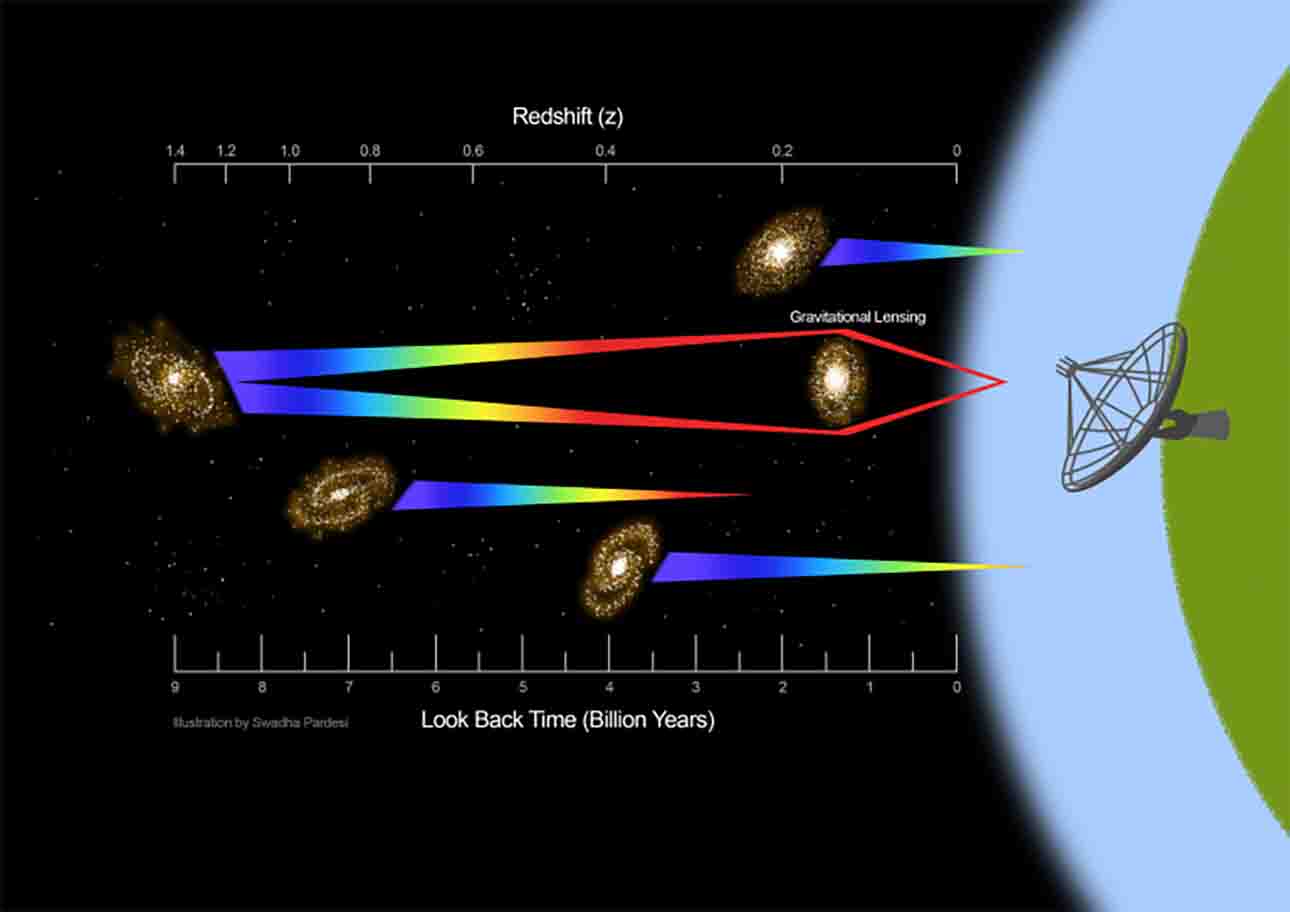Science & Technology, India (Commonwealth Union) – The rapid advance of Next generation telescopes has made significant contributions to scientific research in recent years with the ability to pick details and signals that may have been missed on prior occasions with less advanced technology.
Astronomers from McGill University in Canada and the Indian Institute of Science (IISc) have applied data from the Giant Metrewave Radio Telescope (GMRT) based in Pune India to identify a radio signal starting from atomic hydrogen in a highly distant galaxy. The astronomical distance over which such a signal has been traced, is the widest so far by a large margin. This is also the 1st verified detection of strong lensing of 21 cm transmission from a galaxy. The findings appeared in the Monthly Notices of the Royal Astronomical Society.
Atomic hydrogen is the basic fuel needed in star formation of a galaxy. When hot ionized gas from the surrounding medium of a galaxy moves into the galaxy, cooling of the gas followed by the production of atomic hydrogen, which turns into molecular hydrogen, and in time, results in the production of stars. Hence gaining knowledge on the evolution of galaxies over cosmic time needs to trace the evolution of neutral gas at various cosmological epochs.
Atomic hydrogen sends out radio waves of 21 cm wavelength, with the ability to be identified utilizing low frequency radio telescopes such as GMRT. Hence, the 21 cm emission is a direct tracer of the atomic gas content in both nearby as well as distant galaxies. An obstacle arising from this is that, this radio signal is highly weak and is extremely unlikely to identify the emission from a faraway galaxy with presently used telescopes because of their restricted sensitivity. Since recently the majority of distant galaxy detected with a 21 cm emission was at redshift z=0.376, corresponding to a look-back time, as the time elapsed between identifying the signal and its original emission – of 4.1 billion years.
The application of GMRT data, permitted Arnab Chakraborty, a postdoctoral researcher at the Department of Physics and Trottier Space Institute of McGill University together with Nirupam Roy, Associate Professor, Department of Physics, IISc to detect a radio signal from atomic hydrogen from a faraway galaxy at redshift z=1.29.
“Due to the immense distance to the galaxy, the 21 cm emission line had redshifted to 48 cm by the time the signal travelled from the source to the telescope,” explained Chakraborty. The signal identified by the researchers was transmitted from this galaxy when the universe was around 4.9 billion years old; making the look-back time for this source 8.8 billion years.
Paving the way for this detection was made by a phenomenon known as gravitational lensing, in which the light emitted by the source is bent as a result of the presence of another massive body, like an early type elliptical galaxy, between the target galaxy and the observer, effectively leading to the “magnification” of the signal. “In this specific case, the magnification of the signal was about a factor of 30, allowing us to see through the high redshift universe,” said Associate Professor Roy.
Researchers further noticed that the atomic hydrogen mass of this specific galaxy is roughly twice as high as its stellar mass. These findings indicate the possibilities of observing atomic gas from galaxies at cosmological distances in similar lensed systems in a moderate amount observing time.
Yashwant Gupta, Center Director at NCRA, says, “Detecting neutral hydrogen in emission from the distant Universe is extremely challenging and has been one of the key science goals of GMRT. We are happy with this new path breaking result with the GMRT, and hope that the same can be confirmed and improved upon in the future.”








